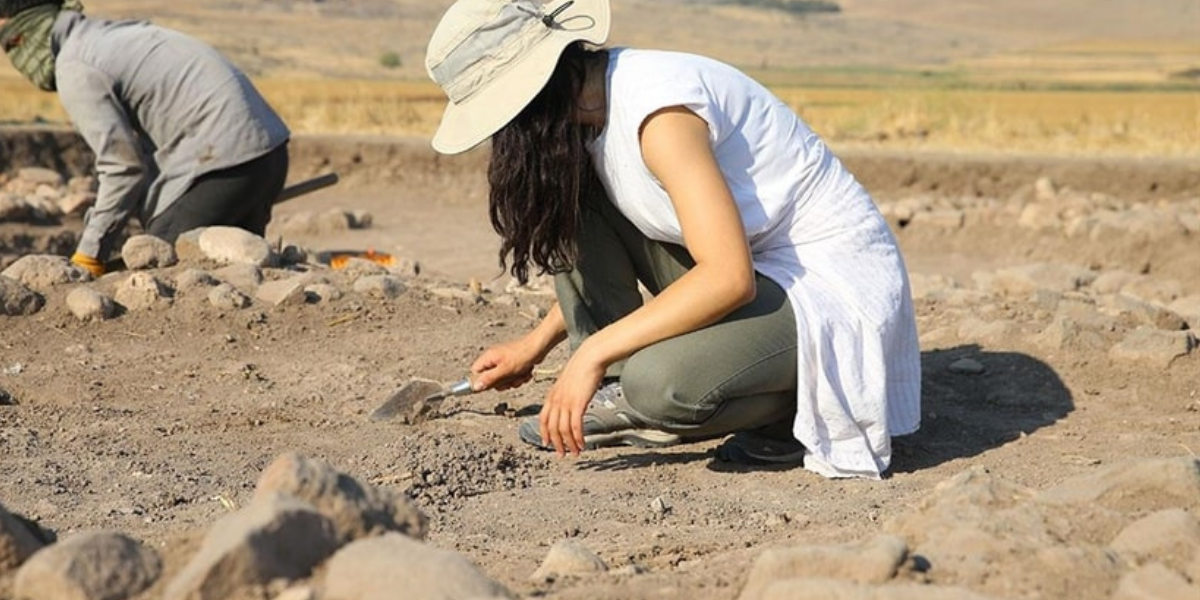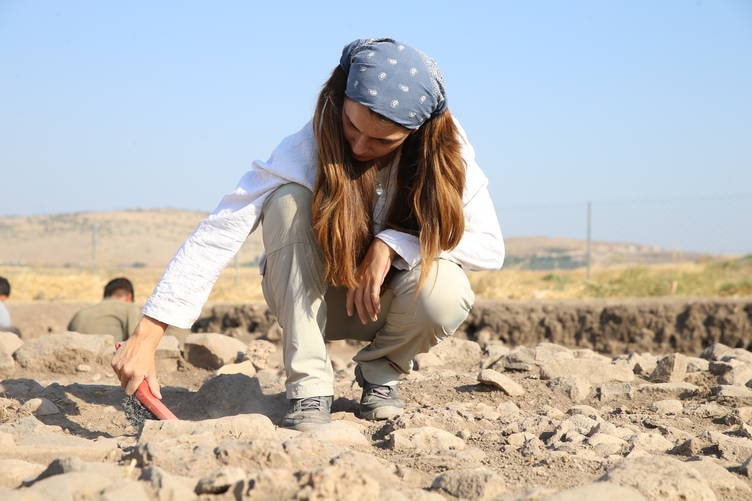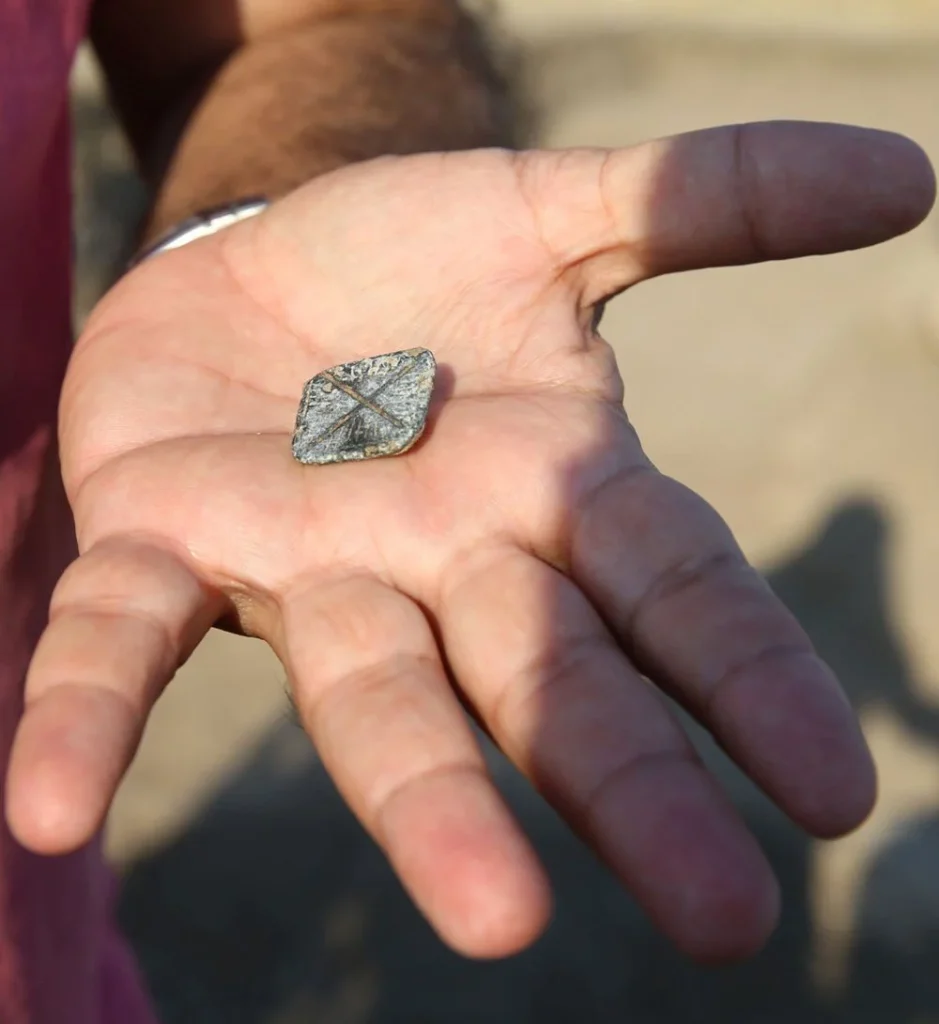
7,450-year-old stamp seals with geometric patterns discovered at Domuztepe
Stamp seals were discovered in a 7450-year-old layer in Domuztepe Mound, which is thought to be the intermediate link connecting Göbekli Tepe and the Sumerians.
In the layer where the stamp seals were found, the remains of three silos with a diameter of 3 meters were also found.
Domuztepe Mound is located in the Türkoğlu district of Kahramanmaraş. The excavations are being carried out by Hacettepe University Faculty of Letters, Department of Archaeology, Assoc. Prof. Dr. Halil Tekin and his team.
Findings related to the climate change experienced in 5450 BC were found at Domuztepe.

Assoc. Prof. Dr. Halil Tekin said, “Meteorological findings clearly show that there was a very serious drought in the region in 5450 BC. The data we have shows this very clearly. There was a severe drought, the temperature increased, the precipitation level decreased and these people felt the need for serious accumulation. There is such an accumulation that very large silos are emerging.”

The stamp seals give clues about the art and symbolism of the period.
Halil Tekin, “In the ancient period, the seal was used to ensure the ownership or security of commercial materials, and the geometric patterns on it also give clues about the art understanding and symbolism of that period.”

Pointing out that geometric patterns were used on the seals, Tekin said:
“I think there is a difference between the seal understanding of that period or the objects we call seals and today’s. Although the seal shows ownership, I think it has another meaning rather than ownership. The biggest feature is that we do not see images in the form of extras, that is, people, animals or plants. There is a completely geometric expression. In archaeology, we perceive geometric expression as social expression, not individual expression. When it is individual, it becomes figurative. In other words, we do not yet see complete individuality, but sociality, that is, community and ownership of the community, if it is ownership, we see this.”

Domuztepe excavations will shed light on the answer to the question “What happened after Göbeklitepe and its contemporaries?”
Tekin said, “Those enormous monumental structures, where did the communities that created them go and what kind of life did they return to? Domuztepe is one of the places that has the potential to unlock that key, but more importantly, we also found the question ‘What happened after Domuztepe?’ Here we found the question ‘What happened after Domuztepe?’ That is Sumer. Domuztepe is the link connecting Göbeklitepe and Sumer. As a very important link, as a potential, we share these with the public by presenting new, strong evidence every year with excavations that will continue for the next decades.”
Cover Photo: Gökhan Çalı, Sinan Doruk/AA
You may also like
- A 1700-year-old statue of Pan unearthed during the excavations at Polyeuktos in İstanbul
- The granary was found in the ancient city of Sebaste, founded by the first Roman emperor Augustus
- Donalar Kale Kapı Rock Tomb or Donalar Rock Tomb
- Theater emerges as works continue in ancient city of Perinthos
- Urartian King Argishti’s bronze shield revealed the name of an unknown country
- The religious center of Lycia, the ancient city of Letoon
- Who were the Luwians?
- A new study brings a fresh perspective on the Anatolian origin of the Indo-European languages
- Perhaps the oldest thermal treatment center in the world, which has been in continuous use for 2000 years -Basilica Therma Roman Bath or King’s Daughter-
- The largest synagogue of the ancient world, located in the ancient city of Sardis, is being restored











Leave a Reply